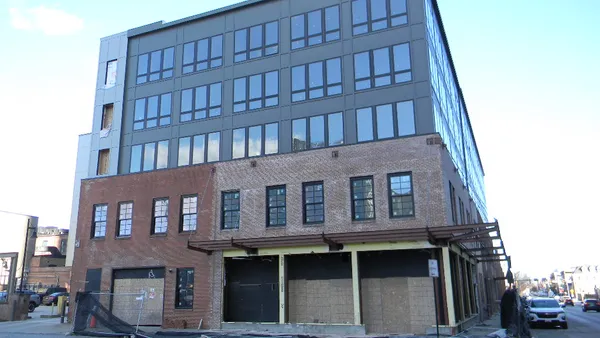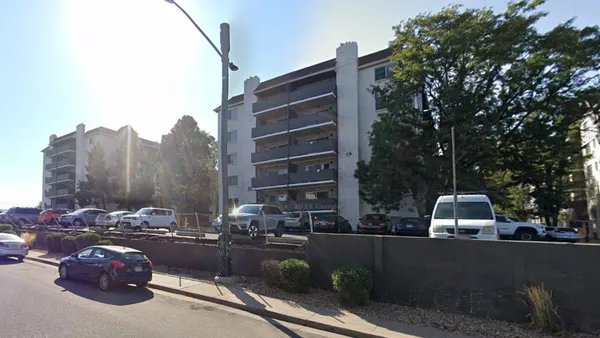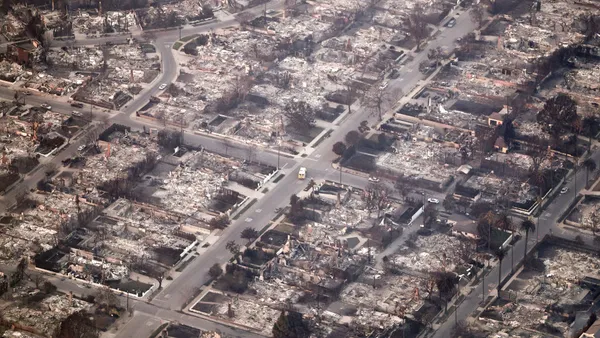Dive Brief:
- The national average multifamily rent remained flat at $1,701 in January 2023, according to Yardi Matrix’s latest National Multifamily Report, following a $4 decline in December and a record $9 drop in November.
- Year-over-year rent growth declined 70 basis points in January, down to 5.5%. Indianapolis continues to lead the major markets in YOY rent growth at 10.5%. Although rent growth is decelerating, YOY growth remains positive in all of the top markets — even Phoenix (0.6%) and Las Vegas (0.3%), which have fallen far from their positions at the top of the list one year ago.
- Demand for apartments remains healthy, even though household formation slowed in 2022. The rental market absorbed 269,000 new units last year, according to Yardi Matrix.
Dive Insight:
Following the unsustainable rent and demand growth of the last two years, debates about the near future of the multifamily market include how much demand is expected to decline and the impact of that decline on rents, according to Yardi.
Last month’s flat growth came in the middle of the winter season, a traditionally slow time for multifamily leasing. Overall, YOY growth is steady in the top 30 metros by population, though some metros with outsize 2022 growth have fallen back towards the median, including Miami and Nashville, Tennessee.
The strong performance of the job market, which gained 517,000 new jobs in January, is another sign that apartment demand should remain stable, according to Yardi. With no present data indicating household finances are weakening, the primary threat to the industry is the possibility that the Federal Reserve might continue to push short-term interest rate increases.
| Market | YOY rent growth, January 2023 | YOY rent growth, December 2022 | Difference |
|---|---|---|---|
| Indianapolis | 10.5% | 11.0% | -0.5 |
| San Jose, California | 8.1% | 9.6% | -1.5 |
| Miami metro | 7.5% | 8.1% | -0.6 |
| Kansas City, Missouri | 7.3% | 8.3% | -1 |
| Raleigh, North Carolina | 6.9% | 7.0% | -0.1 |
| Charlotte, North Carolina | 6.8% | 7.3% | -0.5 |
| Chicago | 6.7% | 6.7% | 0 |
| Portland, Oregon | 6.7% | 7.2% | -0.5 |
| New York City | 6.7% | 7.1% | -0.4 |
| Dallas | 6.7% | 7.5% | -0.8 |
SOURCE: Yardi Matrix
Despite these tailwinds, one of the top concerns among multifamily operators is rising expenses. Property taxes, financing costs and insurance premiums are all increasing. Insurance losses related to environmental catastrophes have topped $100 billion in three calendar years between 2017 and 2020, and concerns abound that insurers’ models may not be able to keep pace with the reality of climate-related issues.
This is particularly stark for commercial property insurance in high-risk, high-rate environments, including Florida, Texas and the Gulf Coast.
“2023 will be the year of expense control,” said Joanna Zabriskie, CEO of Des Moines, Iowa–based multifamily owner-operator BH Cos., at the National Multifamily Housing Council’s Apartment Strategies Conference in Las Vegas, according to Yardi. Zabriskie recommended tech solutions as one means to control costs, including paperless leases, virtual tours and property management software.
However, many cost factors remain out of a property owner or manager’s control — including financing, hedging and the whims of the weather.













